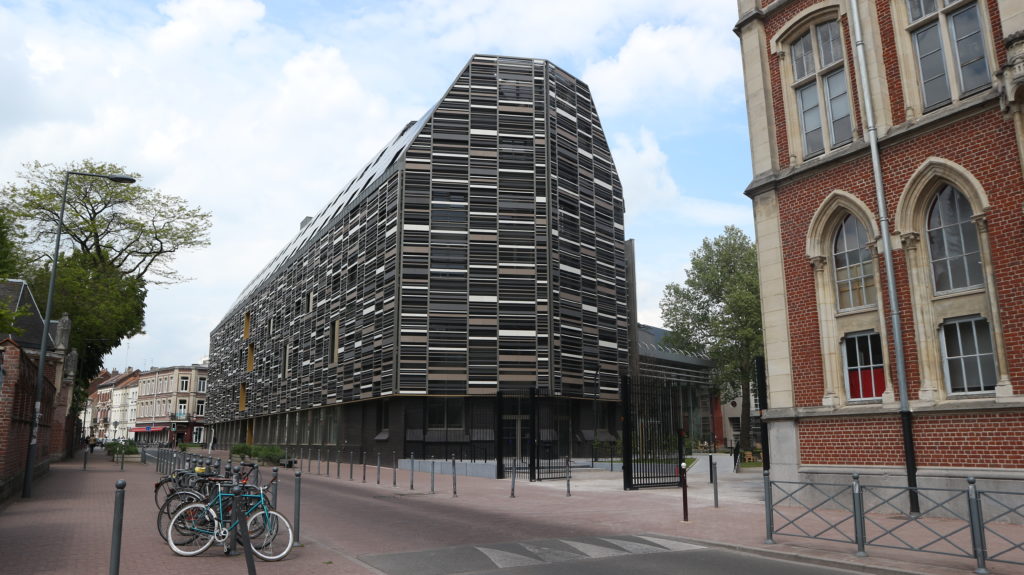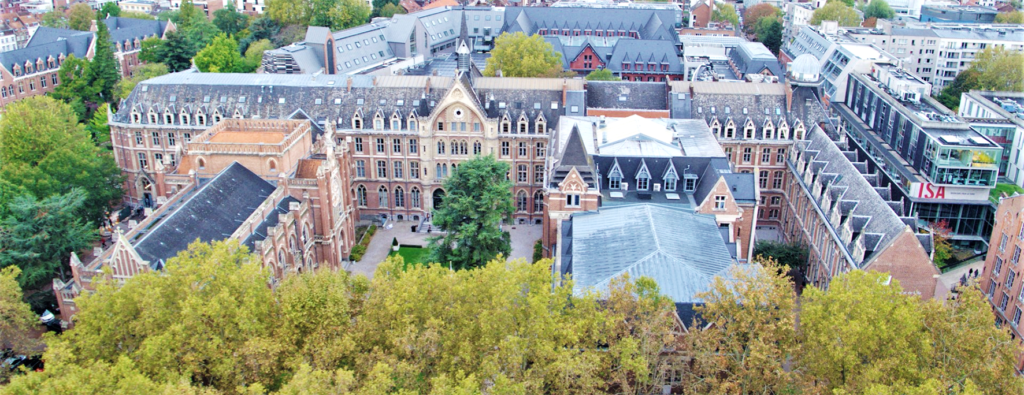JUNIA and ICL



Building complex
Situated in the heart of Lille (France), the Catholic University of Lille was born at the end of the 19th century. The demonstrator is a block of three academic buildings which are connected to the electricity grid by one feed point. Thousands of people work every day in these buildings, only a part of which meets recent energy standards, and possesses an advanced degree of renovation and smartness.
Technology status quo
The three buildings are situated on a same location and have a unique connection to the distribution grid (15kV/400V), with only one single electric meter for the French DSO, ENEDIS.
PV panels are installed on two buildings with a total power of 217.8 kWp, for an average annual energy production around 165 MWh/year. They are connected to the internal electrical grid via Fronius inverters.
An energy storage system, composed of Li-Ion batteries, is connected to the internal electricity grid, with a maximum energy of 200 kWh and a maximum power of 80 kW/40 kW for discharging and charging mode respectively.
Six EV charging points are installed in the parking of the block. Electrical loads, like an Air and Heat Unit (AHU) and boilers complete this demonstrator.
To date, only some of the described electricity systems are controllable.
Objectives
Improve the flexibility for the electricity distribution grid
One objective is to make all of them controllable and to improve the flexibility for the electricity distribution grid (Low Voltage).
Test the energy balancing platform in the existing system
The aim is so to check that the new solutions do not disrupt existing energy management systems.